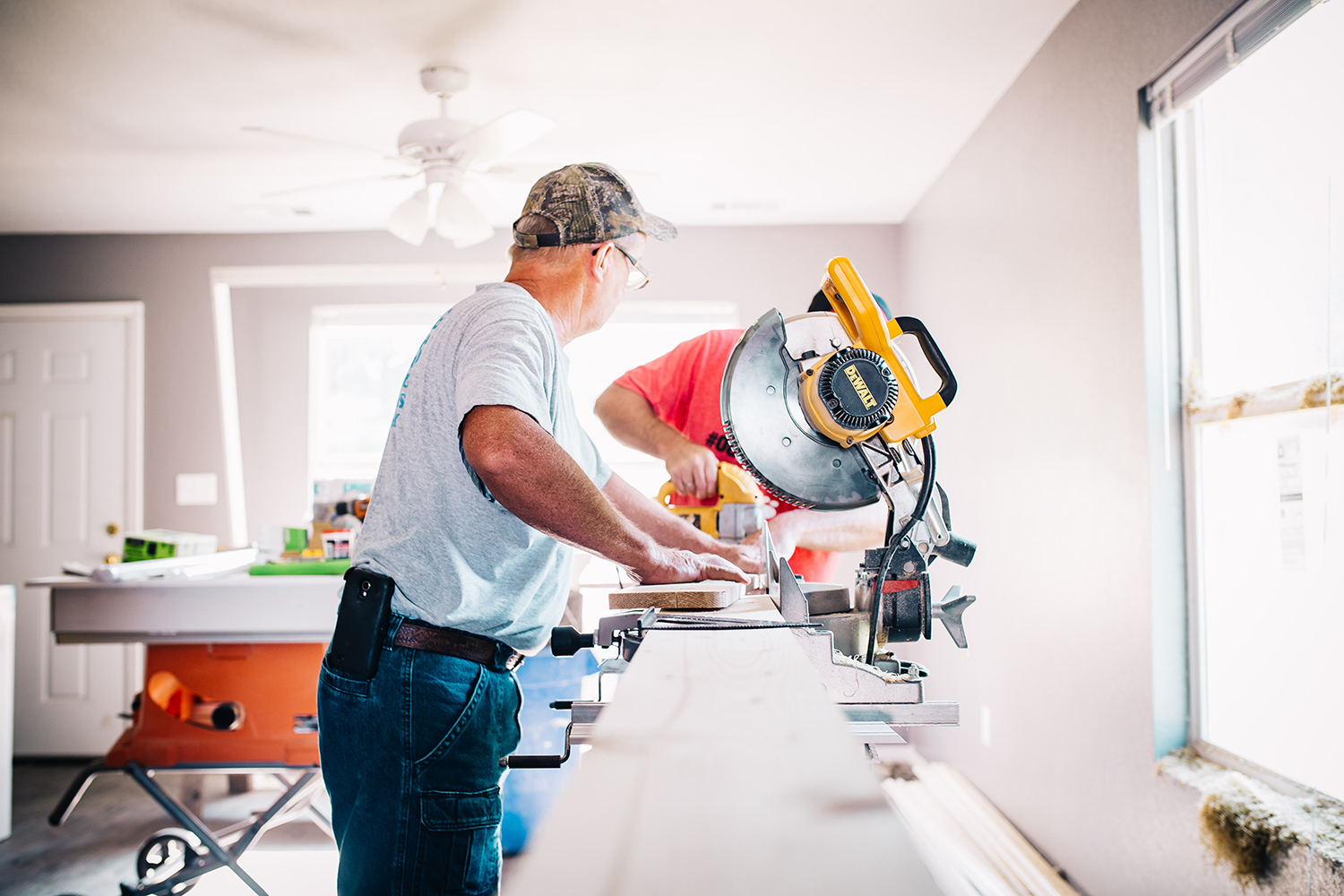Elliott Holt was always firmly opposed to letting employees work from home.
“There’s no control over it,” says the CEO of a Nashville-based medical records company. “We like to be in control.”
With MediCopy growing at breakneck speed, its work-in-the office ethos spelled a feverish expansion of its physical presence in Nashville. After adding a second office two years ago, the firm was poised to lease a third last month.
But since the coronavirus pandemic has forced nearly all of MediCopy’s 200 employees to work from home, Holt has had an abrupt change of heart. He says he’ll let staffers continue to telecommute for the long term, prompting him to relinquish both of the additional offices, convert his headquarters into a training center, and save $350,000 a year in leasing costs.
“Things are working the way they are,” he says.

Elliott Holt, CEO of MediCopy
As states lift stay-at-home orders and gradually let businesses reopen, companies are gingerly allowing white-collar workers to return to office buildings even while weighing how much they really need the space. About half of U.S. employees worked from home during the COVID-19 shutdowns, according to the Brookings Institution. And many companies – including Facebook, Google, Twitter and Morgan Stanley – plan to continue allowing at least some staffers to telework at least some of the time even after a vaccine is available and the health crisis is over.
That could mean a seismic downsizing of the $2.5-trillion office market and the vibrant urban centers that have flourished around them, battering the restaurants, bars and high-end retailers that rely on white-collar workers’ lunch and after-work spending.
“The genie is out of the bottle,” with many companies now embracing remote work, says Victor Calanog, head commercial real estate economics at Moody’s Analytics. And if there’s a major shift to telecommuting, “Do we really need that much office space?”
Downtowns, he says, could become speckled with gleaming, hulking office-building skeletons that resemble industrial relics in cities like Cleveland or Detroit or the growing crop of empty retail spaces in, well, virtually any American city.
To be sure, analysts don’t predict an abandonment of American offices. In fact, more office space could well be needed in the short term to accommodate social distancing requirements until a coronavirus vaccine is widely distributed, presumably next year. That could spark more leasing and construction activity in less-expensive suburbs. And over the long term, most companies likely will still want most workers in the office at least some of the time to promote collaboration and morale, some analysts say.
“I don’t see a situation where offices completely die,” says Paul Leonard, managing consultant at CoStar, a commercial real estate research firm.
But even a noticeable pullback in the U.S. office footprint could have a tangible impact on local economies, reducing city tax revenues, dampening office construction, increasing defaults on commercial loans (and thus hurting banks) and threatening nearby restaurants and shops, say Calanog and Mark Zandi, chief economist of Moody’s Analytics.
Don’t expect any overnight changes. With office lease terms averaging 6½ years, any shrinking of the sector is likely to play out over the next several years and beyond, Leonard says.
Offices are holding up during crisis
Office buildings actually have weathered the short-term effects of the health crisis far better than other commercial real estate precisely because insurance, finance and other professional service employees can work from home – unlike front-line restaurant, retail and manufacturing workers. About 96% of office rents were collected in April and May, compared to a 61% collection rate for shopping centers and about 30% for malls, according to CoStar and NAREIM, a real estate investment trade group.
Still, although hotels, restaurants and stores have been hit hardest by the pandemic, professional and administrative services have felt the ripple effects. About 4 million office jobs were shed in the first and second quarters, according to Oxford Economics and CoStar. Some firms have permanently shut down. And few businesses are signing new leases amid record job losses, the aftermath of the deepest-ever recession, and a pandemic that could still pose hazards for office workers.
Calanog estimates the office vacancy rate – which never fully recovered after hitting 17.6% in 2010, just after the Great Recession – will rise from 16.8% at the end of last year to a record 19.4% by December. He reckons vacancies will top out at 20.2% at the end of 2022. The rate historically has averaged about 10%, he says.
Luxury kitchen goods lose sheen: Sur La Table files for bankruptcy protection, plans to close nearly half of its stores. Here’s the list.
As a result, Calanog expects office rents to decline 10.5% this year, with rates in large cities falling more sharply, including a 20.3% plunge in New York City. Office building sale prices are also expected to tumble.
CoStar is more optimistic, predicting that vacancies will begin declining and rent growth will resume next year as the outbreak eases.
Richard Branch, chief economist of Dodge Data & Analytics, estimates office construction will resume its pre-pandemic pace in 2021 but could be hurt subsequently if large-scale teleworking persists.
Will remote work endure?
That’s the big question: How much of the telecommuting trend – that has up to half of employees working from home most or all the time – will become permanent and wreak lasting damage on the office market. Before the pandemic, just 8.1% of workers spent one to five days a week telecommuting, according to the Bureau of Labor Statistics and CoStar.
About three-quarters of chief financial officers surveyed by Gartner in late March said they plan to permanently shift at least some employees to remote work after the pandemic, with 23% expecting to move at least a fifth of their staffers. And why not? A Stanford University study in 2015 found that allowing employees to work from home four out of five days a week yielded significant productivity gains.
Holt, the MediCopy CEO, says his workers are avoiding hour-long commutes and reducing stress. Company measures, he says, showed they were both slightly more productive and happier when they worked remotely in the second quarter. The $350,000 in annual savings – from halving the firm’s existing and planned Nashville office space to 11,000 square feet – will be used to beef up cybersecurity for home-based networks and profits.
Keith Roberts, president of Zenman, a Denver-based Web design company, plans to go further and ditch the 10-employee firm’s only office. The 1,000-square-foot space –downsized from 7,000 square feet late last year – sports an industrial look with exposed piping, Stars Wars Legos and a pinball machine.

Keith Roberts, president of Zenman
“I always felt like we had to have a really cool space” to impress both clients and job candidates he says. He also believed, “You need the space to inspire creativity.” And he thought content creators, Web designers and software developers had to be together to brainstorm ideas on a whiteboard.
But he says that collaboration now occurs just as effectively online through video chats and other applications, without the distractions of an office.
“COVID has shown me we can be more productive remotely with the tools and technologies that exist,” he says. “In retrospect, the pinball machine and cool space was ego more than a requirement to function at the highest level.” Clients, he adds, have become more accepting of virtual companies with no traditional physical space.
Even some call centers that depend on the esprit de corps forged in group settings are embracing remote work.
Normally, the 127 representatives at St. Louis-based Communications for Research, which recruits people for surveys, benefit from listening to one another’s calls, asking questions and high-fiving when they corral recruits. But during the pandemic, nearly all worked from home and kept up some of those activities through video meetings and group chats, says co-CEO Colson Steber.
“It absolutely changed perceptions,” he says.

Colson Steber, co-CEO, Communications for Research
Now, he says, 52 reps are continuing to work from home and the company plans to merge its two call centers, closing a 4,500-square-foot facility in Steelville, Missouri, at year’s end. That will save about $3,000 a month in rent and related costs, Steber says.
Some prefer offices
Other firms are more reluctant to abandon their digs. St. Louis-based Advocado, a consulting firm for advertisers and their agencies, had all 14 employees seamlessly switch to remote work during the crisis, says president Jeff Linihan. But, he says, staffers missed the office’s camaraderie and offhand sparks of ideas.
After the pandemic fades, he says, employees will work from home an average one day a week, sharing work stations and putting off the need to lease new space as the company expands.
Those kinds of benefits will keep many companies from handing over the office keys, Leonard says. Plus, he says, the allure of urban business districts won’t soon vanish.
“Industries cluster together for high-skilled labor and future talent migrates to these clusters for job opportunities” and downtown amenities, Leonard says.
A spring survey by research firm Gensler found just 12% of U.S. workers want to work full-time from home.
Ultimately, Leonard figures most businesses will adopt a hybrid approach that has employees teleworking about 40% of the time.
Calanog, by contrast, reckons many companies could switch mostly to remote work set-ups. Either way, he and Leonard agree that less time spent in the office could leave about a quarter of currently-occupied office space empty in the next five to 10 years.
Such a development would jeopardize nearby eateries and shops. Frank Bonanno reopened nine of his 10 Denver restaurants in June as Colorado lifted restrictions, staying afloat with outdoor dining. But he recently shut down French 75 again because it has no outdoor patio and drew little traffic in a financial district that has seen few workers return.
When jobless benefits stop: What if you were receiving the $600 every week and then it stopped? Your COVID-19 money questions, answered
Bonanno doesn’t foresee that improving much even after the outbreak is over. “That revenue is gone,” he says.
He plans to stage occasional “pop-up” events in the 3,000-square-foot restaurant, such as a corporate party, as long as his landlord lets him pay a fraction of his former rent. But he’ll give up the space if the strategy isn’t profitable.
Bonanno says he understands the mindset of area office tenants. He recently closed his restaurant company’s 4,000-square-foot administrative office and terminated the lease.
“We’re never going to have an office that significant again,” he says.
This article originally appeared on USA TODAY: Jobs from home: As more people telecommute, the office market could shrivel







